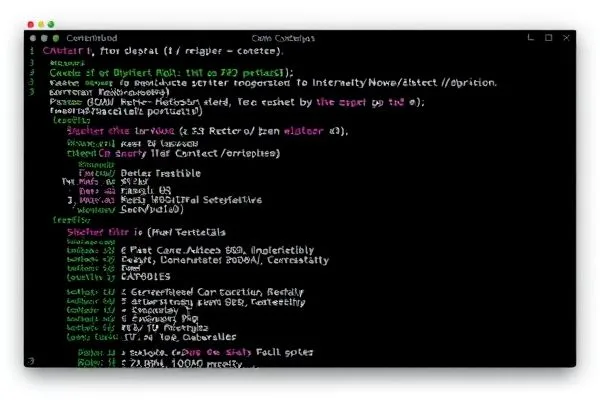In the ever-evolving landscape of cybersecurity threats, the emergence of TCESB malware poses significant risks, particularly to users of ESET security software. Recently identified by Kaspersky, this malware exploits a critical vulnerability in ESET’s Command Line Scanner, enabling a range of stealth operations and payload execution that bypass traditional defenses. This article will delve into the implications of this threat, the methods employed by cyber attackers, and how to mitigate the risks associated with TCESB.
Key Takeaways:
- TCESB malware exploits ESET security software vulnerabilities.
- Utilizes DLL hijacking to launch malicious payloads.
- Employs BYOVD techniques to escalate privileges.
- Regular system monitoring is crucial for threat detection.
The Rise of TCESB Malware
Could your security scanner be the gateway for cyber attackers? Recent findings reveal that TCESB malware has taken advantage of a vulnerability in ESET’s security software, posing a serious threat to devices using this platform. The TCESB malware, linked to specific cyber-espionage groups, utilizes DLL search order hijacking—a method that allows malicious code to take precedence over legitimate software execution. With its unknown origins until recently, TCESB has raised alarms among cybersecurity experts, representing a sophisticated evolution of malware tactics.
How TCESB Operates
The operation of TCESB malware hinges on the exploitation of the ESET vulnerability tracked as CVE-2024-11859. This vulnerability allows attackers with administrative privileges to load a malicious version of the system’s legitimate “version.dll” library. Moreover, TCESB modifies the operating system kernel to suppress crucial notifications, facilitating a more insidious infiltration process. By employing the Bring Your Own Vulnerable Driver (BYOVD) technique and installing the Dell DBUtilDrv2.sys driver, TCESB creates an environment where malicious payloads can be injected and executed without raising alarms.
- DLL Hijacking: This technique exploits the loader lookup mechanism, allowing malware to execute as if it were a legitimate DLL.
- Payload Execution: TCESB continually searches for a specific payload file every two seconds, revealing its capability to adapt and modify its approach based on the system environment.
- Stealth Mode Operations: By disabling event notifications within the kernel, TCESB diminishes the likelihood of detection by security systems.
Preventive Measures and Recommendations
Adopting a proactive stance against threats like TCESB requires vigilant monitoring and prompt updates. ESET has released patches to address the vulnerabilities exploited by TCESB, emphasizing the importance of keeping security software current. Organizations and individuals alike are urged to implement strict monitoring protocols for suspicious driver installations and potentially harmful behaviors indicative of compromise. Implementing Security Information and Event Management (SIEM) solutions can further bolster defense against such advanced threats.
Conclusion:
The emergence of the TCESB malware serves as a grim reminder of the persistent and evolving threats in the cybersecurity landscape. With its sophisticated methods of exploitation and undetected operations, TCESB calls for advanced security measures and constant vigilance to mitigate potential damage. Adopting updated protective measures and closely monitoring system activities are essential steps in defending against such targeted attacks.
FAQs
- What is TCESB malware? It is a newly discovered malware that exploits vulnerabilities in ESET security software to launch attacks.
- How does TCESB execute its payloads? It uses DLL hijacking techniques to run malicious code in place of legitimate software.
- What can users do to protect themselves against TCESB? Keep security software up to date, monitor for suspicious driver installations, and utilize SIEM solutions.
- What vulnerability does TCESB exploit? It exploits a vulnerability tracked as CVE-2024-11859 in ESET’s Command Line Scanner.









